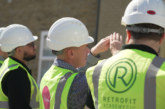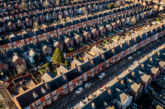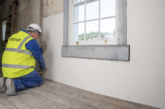As fuel poverty and the cladding crisis leave home safety on shaky foundations, industry experts are looking at smarter ways to protect residents and properties.
Millions of UK households are expected to be hauled into fuel poverty for the first time as energy bills soar, leaving low-income households vulnerable to cold, damp and mould. In Wales alone, up to 45% of all households could be in fuel poverty following the price cap increase of April 2022. Simultaneously, residents who have had dangerous cladding stripped from their buildings post-Grenfell may find that their homes are less energy-efficient for months, or even years. There has also never been more intense focus on improving home safety for social housing residents.
As it becomes increasingly evident that fundamental change is needed to ensure that people feel safe in their homes, legislation is being overhauled at an unprecedented rate. The Fire Safety Act 2021 was introduced to clarify who is accountable for reducing the risk of fires in England and Wales, and the Building Safety Bill is undergoing review to ensure a golden thread of information exists so that resident safety is considered at every stage of a building’s lifetime.
The Welsh Government is also undertaking the biggest change to its housing law in decades. The Renting Homes (Wales) Act 2016 will come into force this July to ensure that both private and social rented properties in Wales are fit for human habitation. This includes regulations on fire and carbon monoxide safety, and condensation, damp and mould. However, industry experts have expressed concern that traditional solutions for addressing damp and mould are often ineffective, time-consuming and strain already-squeezed budgets.
 Nick Rutter, Co-founder of home safety technology specialist FireAngel, said: “Anti-mould wall coatings and regular roof and gutter maintenance only go so far, and cavity or external wall insulation can increase problems if installed incorrectly. This is particularly problematic for social housing providers. As waiting lists and placement times get longer by the day, there’s intense pressure on social housing providers to fix problems quickly and move new tenants in. This, along with poor advice and limited access to specialist knowledge, can lead to only surface issues being treated, and providers and residents at risk of mould and damp reoccurring.”
Nick Rutter, Co-founder of home safety technology specialist FireAngel, said: “Anti-mould wall coatings and regular roof and gutter maintenance only go so far, and cavity or external wall insulation can increase problems if installed incorrectly. This is particularly problematic for social housing providers. As waiting lists and placement times get longer by the day, there’s intense pressure on social housing providers to fix problems quickly and move new tenants in. This, along with poor advice and limited access to specialist knowledge, can lead to only surface issues being treated, and providers and residents at risk of mould and damp reoccurring.”
The Internet of Things (IoT) can offer an alternative solution to help housing providers monitor humidity and temperature levels in a property. Carefully placed IoT sensors can provide specific data in real-time, allowing a much earlier opportunity to investigate and remedy potential problems.
Nick Rutter, continued: “Installing IoT sensors in properties allows housing providers to deliver tailored advice to relevant tenants and provide accurate information about where they might need to adopt different ventilation or heating practices.
“Smart sensors can also provide a clear audit trail, recording accurate and regular environmental readings specific to each property and room. Since the data captured can be analysed remotely, there is less need for intrusive onsite investigations.
“As the laws on home safety continue to tighten, data collected from IoT sensors may also play a role in future regeneration projects. Analysing data for trends and patterns can show housing providers which regions or properties are particularly prone to damp, such as those in coastal areas, and ensure those properties have the right insulation and ventilation installed.”
The Internet of Things now allows landlords to deploy a host of sensors in properties. This includes smoke and carbon monoxide alarms, enabling housing providers to monitor for fire risks as well as the onset of condensation, damp and mould.
Nick Rutter added: “Our New Generation Cellular Gateway delivers a holistic resident safety solution, encompassing fire safety, AI-driven risk stratification and background environmental monitoring. Through additional Zigbee sensors the solution takes resident safety and wellbeing to previously unachievable levels, enabling housing providers to prioritise condensation, damp and mould interventions and increase fire prevention measures for residents who need it most.
“By tapping into IoT, we can create smarter, healthier homes that protect residents today, tomorrow and in the future.”









